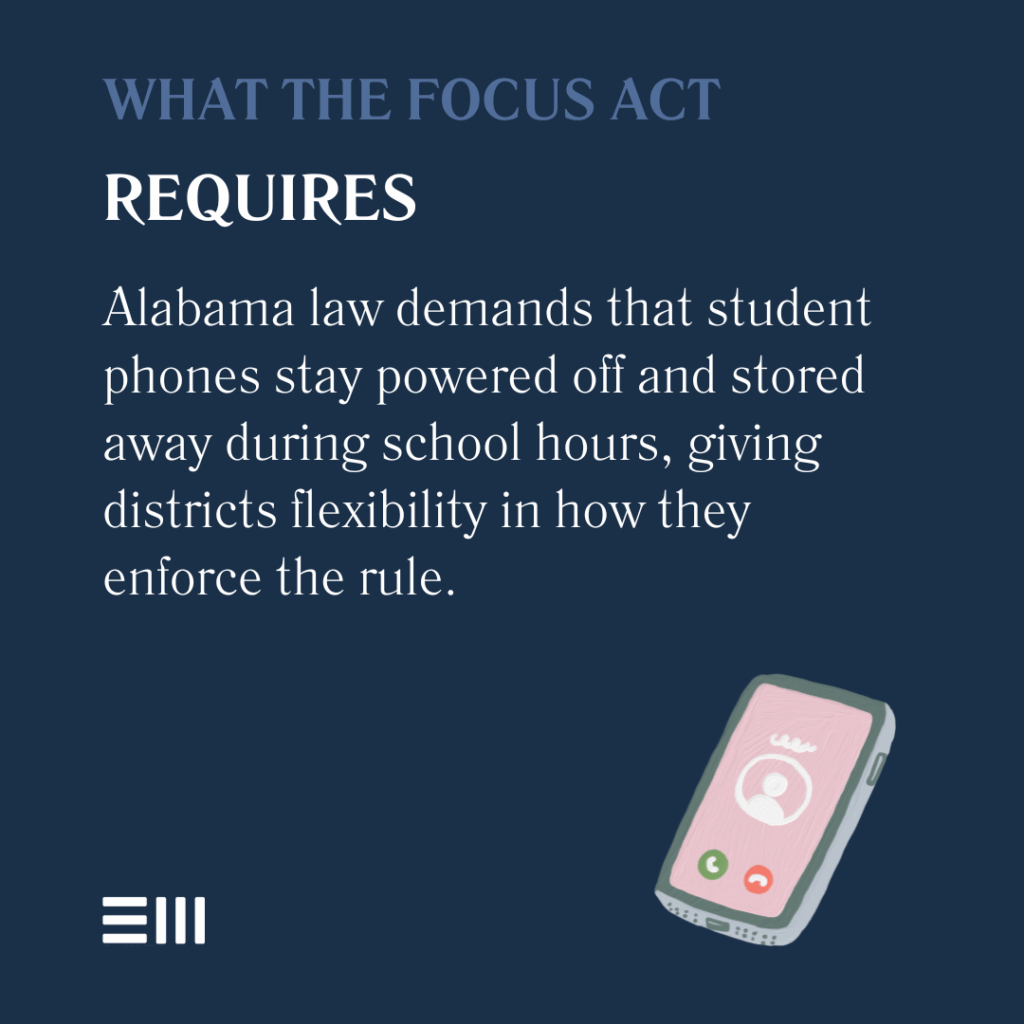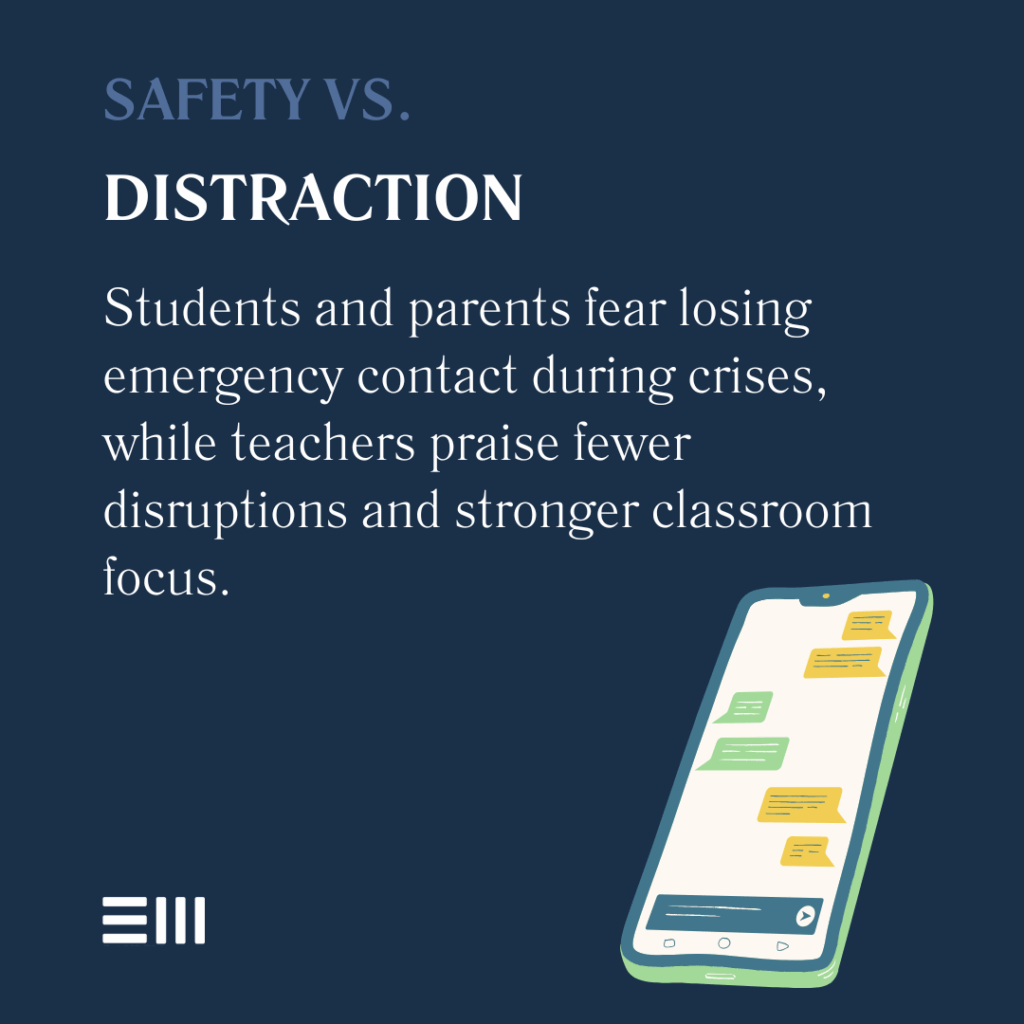
As Alabama students returned to classrooms this fall, they encountered a new reality: mandatory separation from their smartphones under the FOCUS Act.
The law, formally known as “Freeing Our Classrooms of Unnecessary Screens for Safety,” requires all public schools to restrict cell phone use during the school day, igniting passionate debate between educators who celebrate reduced distractions and families concerned about emergency communication.
The Law’s Requirements and Rationale
Dr. Eric Mackey, Alabama State Superintendent, frames the issue starkly: “I keep saying to people, it’s not about the phone capacity, it’s about they are supercomputers in a child’s pocket. It’s not just phone, they are internet, they are texting, video. We don’t need that going on during the school day. We need students to focus on what’s happening in school. Students need to be focused on learning.”
The FOCUS Act mandates that phones must be:
- Powered off completely during school hours.
- Stored off the student’s person.
- Kept in designated areas determined by each district.
While the state law is clear, implementation varies significantly across Alabama’s school districts, creating a patchwork of enforcement methods that reflect local priorities and resources.

District-by-District Implementation
#1: Tuscaloosa City Schools
Students place phones in “Yondr” pouches—specialized magnetic-locking bags sealed at the start of the day and unlocked when the final bell rings.
This system ensures phones remain with students but are inaccessible during instructional time.
#2: Hoover City Schools
A more traditional approach requires students to power down devices and store them in backpacks or lockers throughout the day.
#3: Individual District Flexibility
Mackey explained the state’s approach: “We left it up to each district to decide how they want to make sure the phone is stored. We’ve just been very clear the law has to be implemented, the law says the phone has to be turned off and stored off the student’s person. We are letting each district deal with that.”
Teachers Celebrate Classroom Changes
Educators have emerged as the law’s strongest supporters.
Erika Hughes from the Central Alabama American Federation of Teachers expressed relief: “Our job is to represent teachers and support staff, and every day they face difficulties keeping students engaged. They battle enough to not have to battle technology as well and students being on their devices at all times even when they’re asked not to. So, this is a huge win for educators and support staff to be able to have one less distraction in the classroom.”
Teachers report:
- Increased student engagement.
- Fewer behavioral disruptions.
- More peer-to-peer interaction.
- Improved classroom management.
These positive changes have reinforced educators’ belief that removing phones was necessary for creating effective learning environments.
Parents and Students Push Back
Not everyone celebrates the new restrictions. Parent Lea Hill questioned legislative priorities: “I don’t understand why we are once again passing legislation and focusing time on things that are not what the real threat to our children are today.”
Student-Led Opposition
Spain Park High School junior Sai Vajaha took action by launching an online petition to reverse the ban, which has collected thousands of signatures. “Me and my friends were talking, no students are fighting against this phone ban, so I was like why not I should be the one to start. I have no experience fighting a law or changing policies but I feel like this would be a good step towards my future,” Vajaha explained.
The petition caught the attention of Representative Terri Collins, who defended the legislation, stating: “The harm that cell phones is having on our students is overwhelming. The interference in classroom learning is tremendous.”
The Safety Debate
Central to student opposition is concern about emergency situations. Vajaha articulated fears shared by many:
“It’s important to me, during emergencies. There’s been 27 school shootings last year, and that’s a big concern. Even if it hasn’t happened at Spain Park ever, that’s still a possibility. We can’t predict what’s going to happen in the future. But that is something. Emergencies. Fires. Shootings. Anything can happen. That’s just a way we need to have phones in schools, just to contact.”
This safety argument resonates with parents who want immediate access to their children during crises, creating tension between:
- Educational goals of reduced distraction.
- Safety concerns about emergency communication.
- Students’ desire for connectivity.
- Parents’ need for peace of mind.
These competing priorities highlight the fundamental challenge of balancing educational objectives with modern safety realities.

Measuring Compliance and Impact
The state is taking a data-driven approach to evaluate the FOCUS Act’s implementation. Mackey revealed plans for a comprehensive assessment: “You’ll see a strong push for that in September as we’ll gather new data in addition to the data we gathered at the end of the last school year and in the summer.”
The evaluation includes:
- Large-scale teacher surveys developed at Horton Business School at the University of Pennsylvania.
- Widespread participation across districts.
- Comparison with baseline data from before implementation.
- Analysis of academic and behavioral outcomes.
This comprehensive data collection will help determine whether the FOCUS Act achieves its intended goals or requires modification.
The Search for Middle Ground
As the debate continues, some stakeholders hope for a compromise. Vajaha, despite leading opposition, acknowledges the complexity: he wants phones accessible during emergencies while understanding concerns about classroom distractions.
Potential compromise solutions being discussed include:
- Emergency-only access protocols.
- Designated phone zones during non-instructional time.
- Parent hotlines for urgent communication.
- Modified restrictions for older students.
Whether any of these alternatives will satisfy both safety advocates and education officials remains to be seen as the school year progresses.
Looking Ahead
The FOCUS Act represents Alabama’s attempt to address what many see as a growing crisis of student distraction and disengagement. Whether the benefits of improved classroom focus outweigh concerns about emergency communication remains a contentious question.
As districts continue implementing their chosen enforcement methods and the state gathers data on outcomes, the debate over phones in schools reflects broader societal questions about technology’s role in young people’s lives.
The coming months will reveal whether Alabama’s approach becomes a model for other states or requires significant modification based on student, parent, and educator feedback.
For now, Alabama students must adapt to school days without their pocket supercomputers, while adults on all sides of the debate watch closely to see if academic gains justify the communication constraints.
Can't find what you're looking for? Search our site below.










